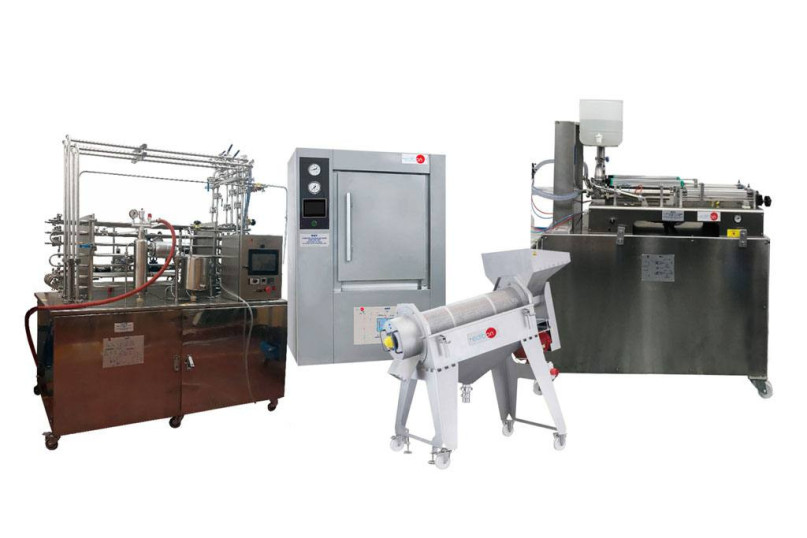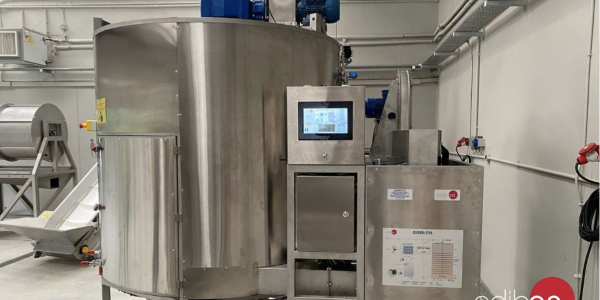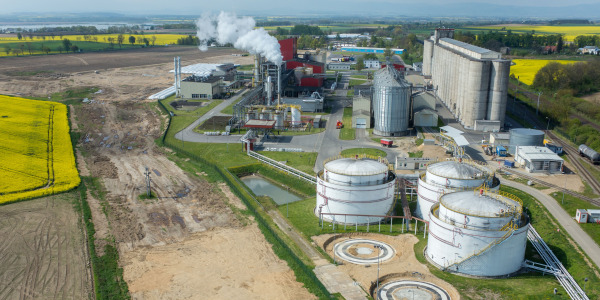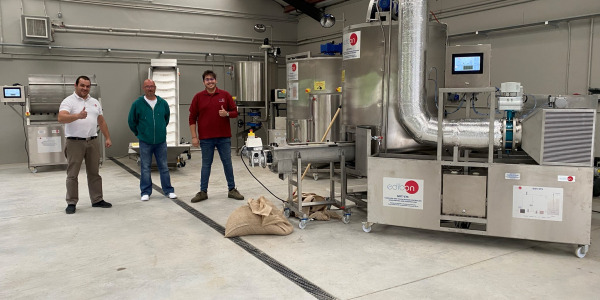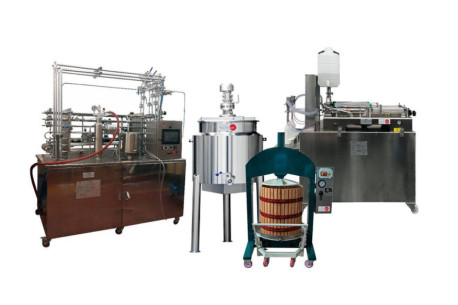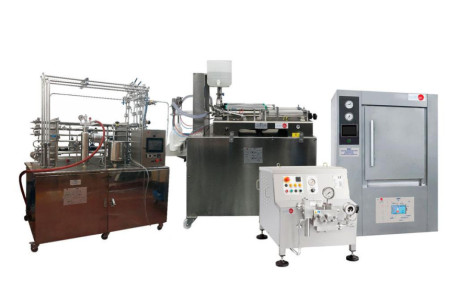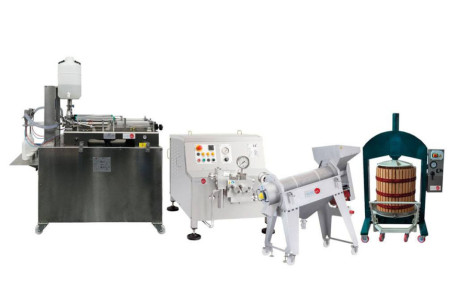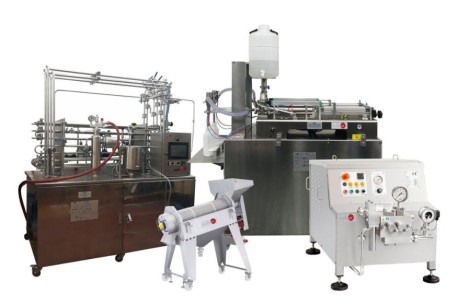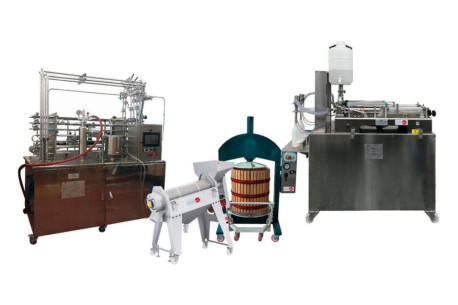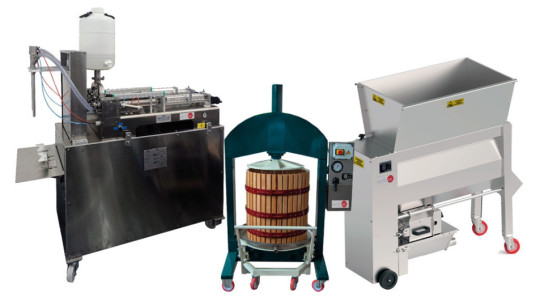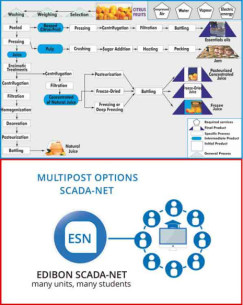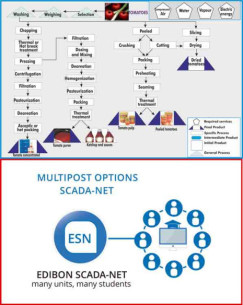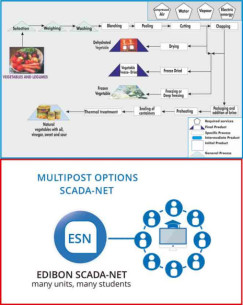The Pilot Plant for Fruit Jam Production, "FR00/FJ", is a pilot-scale pilot plant equipped to carry out all the industrial stages for jam production.
In the production plant of fruit jam, the process begins with the reception of fresh fruit, where a meticulous process of selection, washing and preparation of the fruit is carried out. To carry out these stages in the pilot plant, the following unit is included:
- WMFV. Washing Machine for Fruit and Vegetables. Fruit washing is essential to ensure hygiene and food safety. Its function is to remove any dirt, residue or surface contaminants from fresh fruit, ensuring that it is clean and ready for processing. In addition, during this process, pieces of fruit that do not meet the quality standards for consumption are discarded. Once the selection is complete, the fruit is peeled if necessary, preparing it for the next step: obtaining the fruit pulp.
- FPCR. Fruit Pitting and Crushing Unit. The process of preparing the fruit involves pitting and crushing the fruit to break the cells and release the juice to obtain the juice efficiently, which represents a key role in the fruit preparation stage. It crushes the fruit and, if necessary, removes the pits, which facilitates juice extraction and ensures greater efficiency in the process.
Once the fruit is crushed, the most important step in the production of jam is the cooking of the crushed fruit mixed with sugar and other seasonings. This stage consists of cooking the crushed fruit mixed with sugar and other seasonings. The following unit is required:
- MICF. Electric Marmite for Fruit Cooking by Immersion. The marmite plays a crucial role in the production process by ensuring the desired quality and consistency of the jam. It allows a uniform heat distribution, which ensures precise and controlled cooking. In addition, it prevents the formation of lumps and helps to maintain a smooth and consistent texture in the final product. The marmite also facilitates the incorporation of other ingredients, such as sugars and flavors, ensuring a complete integration.
Once the jam is obtained, the product goes through a pasteurization process, where two alternative units are available: the Computer Controlled Teaching Autonomous Pasteurization Unit, "PADC" and the Computer Controlled and Touch Screen UHT Unit, "AUHT/CTS". In this way, the pilot plant includes just one pasteurization unit of the two mentioned previously, according to the needs of the process.
This step is essential to ensure the proper preservation of the product, extending its shelf life and maintaining its freshness and natural flavor. There are three different processes: VAT or slow pasteurization, High temperature short time pasteurization (HTST) and Ultra-High Temperature pasteurization (UHT).
- PADC. Computer Controlled Teaching Autonomous Pasteurization Unit. It allows to study VAT or slow pasteurization and its process variables. The unit receives jam from a refrigeration tank (not included) and this is impelled with a pump (computer controlled). It is heated in the heat exchanger, by counter-current flow, with hot water coming from a circuit formed by a water tank with a heating element (computer controlled), a water pump (computer controlled), a manometer, a security valve, an expansion vessel, a purge valve and a pressure regulator, until reaching the established pasteurization temperature.
- AUHT/CTS. Computer Controlled and Touch Screen UHT Unit. It is a compact design and easy installation pilot plant that works as independent unit or as part of an integrated process finishing that allows for studying in depth the UHT (at Ultra-High Temperature) pasteurization process of products and the variables of the process.
Both pasteurizers are used to heat the jam to a temperature sufficient to eliminate harmful bacteria and microorganisms, without compromising the flavor and nutrients of the jam. This process helps to extend the shelf life of the product without significantly altering its properties.
To ensure food safety and the quality of the final product, it is crucial to sterilize the jars and unit that will come into contact with the final product. The following equipment is required for this purpose:
- BIEV. Computer Controlled Steam Sterilizer Unit. This unit effectively eliminates any harmful microorganisms present on packaging and production tools, also contamination is prevented, and the shelf life of the jam is prolonged. Steam sterilization, consisting of an autoclave, is a real unit used in many medical and research centers for the proper sterilization of typical instruments, avoiding potential contamination effects from infectious pathogens. It carries out the sterilization process in a sealed chamber at high pressure and temperature through proprietary software that allows monitoring of the process at all times.
The product is then bottled using a bottling machine and a capping machine. The plant has two alternative bottling machines: the Computer Controlled Liquid Packaging Teaching Unit, "EDLC" and the Filling machine for viscous agri-food products, "PVAFJ". Therefore, the pilot plant includes one of the two bottling units mentioned above, as required.
- EDLC. Computer Controlled Liquid Packaging Teaching Unit. This unit allows the jam to be stored in containers suitable for transport and preservation, ensuring that they reach the final consumer with maximum quality and freshness. The Computer Controlled Liquid Packaging Teaching Unit, "EDLC", unit is a liquid and semi-dense products dosing machine based on dose delivery through a pneumatically-operated cylinder. The packer is responsible for filling the containers with the processed jam in an efficient and sanitary manner.
- PVAFJ. Filling machine for viscous agri-food products. This unit doses high viscosity liquid products, as opposed to the possibility of packaging liquid or semi-dense EDLC products. Likewise, the bottler is responsible for filling the containers with the processed jam in an efficient and sanitary manner, guaranteeing the transportation and correct storage of the product.
In addition, the product is capped and sealed for proper preservation in the next unit supplied.
- EDMT. Capping Machine for Agri-food Liquid Products. The capper is responsible for placing the hermetic caps on the jam-filled containers, ensuring that they are securely sealed and that the product is protected against contamination and oxidation. This unit together with the bottling machine ensures that the final product is ready for distribution and consumption, maintaining its freshness and quality.
Once the jam is packaged, it is quickly stored in a refrigerator in order to preserve the quality and guarantee the safety of the jam. Therefore, the pilot plant includes the following unit:
- RRC/CTS. Computer Controlled and Touch Screen Refrigerator Reception Cabinet. The final cooling of packaged jams is crucial to preserve their freshness, flavor, and quality. By rapidly reducing the temperature, residual cooking processes are halted, the growth of microorganisms is prevented, and the food safety of the product is ensured. Additionally, quick cooling helps maintain the desired texture and consistency of the jam, providing an optimal sensory experience for the end consumer.
Depending on the required production and the characteristics of the fruits to be treated there are recommended the following elements: Additional recommended elements (Not included):
If a high product flow is required, the use of a transit pump to pump and transport the intermediate products from the plant is recommended. The following unit can be considered for this application:
- TPAF. Transit Pump for Agri-food Products. This unit can be used with a wide variety of agri-food products and allows working in a wide range of flow rates.
Finally, during the whole production process, products and by-products are generated and can be stored in steel (not included) or polypropylene (not included) tanks suitable for working with agri-food products. The units that perform this function are:
- SSTAF. Stainless Steel Tank for Agri-food Products. Stainless steel tank designed for the storage of intermediate and final products in a plant. Its stainless steel construction ensures corrosion resistance and a hygienic surface. Its modular design and storage capacity make it ideal for efficient management of production processes.
- PTAF. Polyethylene Tank for Agri-food Products. Polypropylene tank designed for the storage of intermediate and final products in an industrial plant. Its polypropylene construction offers resistance to chemical corrosion and excellent durability, making it ideal for environments where agri-food substances are handled. Its lightweight and versatile design allows for easy installation and transport.
 Preferências de cookies
Preferências de cookies

